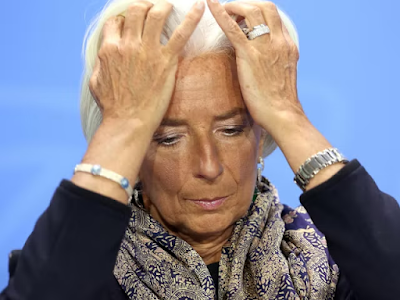Thomas Jordan, Chairman of the Governing Board of the Swiss National Bank
News conference of the Swiss National Bank, Berne, 14.12.2017
Introductory remarks by Thomas Jordan
Ladies and gentlemen
It is a pleasure for me to welcome you to the Swiss National Bank’s news conference. I will begin by explaining our monetary policy decision and our assessment of the economic situation. I will then hand over to Fritz Zurbrügg, who will speak about current developments in the area of financial stability. After that, Andréa Maechler will review the situation on the financial markets and the progress in reference interest rate reform. Finally, we will – as ever – be pleased to take your questions.
Monetary policy decision
Let me begin with our monetary policy decision and the inflation forecast.
We are maintaining our expansionary monetary policy in order to stabilise price developments and support economic activity. Interest on sight deposits at the SNB is to remain at –0.75% and the target range for the three-month Libor is unchanged at between –1.25% and –0.25%. We will remain active in the foreign exchange market as necessary, while taking the overall currency situation into consideration.
The Swiss franc has depreciated in recent months. The overvaluation has thereby decreased, yet overall the franc remains highly valued. The depreciation of the franc reflects the fact that safe havens are currently less sought after. However, this development is still fragile.
Therefore, despite the easing of the situation, the negative interest rate and our willingness to intervene in the foreign exchange market as necessary remain essential. These measures keep the attractiveness of Swiss franc investments low and thus ease pressure on the currency. A renewed appreciation would still be a threat to price and economic developments.
The new conditional inflation forecast for the coming quarters is higher than it was in September. This is mainly due to increased oil prices and the further weakening of the Swiss franc. The longer-term inflation forecast is virtually unchanged. For the current year, it has risen marginally to 0.5%, from 0.4% in the previous quarter. For 2018, we anticipate an inflation rate of 0.7%, compared to 0.4% in September. For 2019, we continue to expect inflation of 1.1%. The conditional inflation forecast is based on the assumption that the three-month Libor remains at – 0.75% over the entire forecast horizon.
Global economic outlook
I would now like to turn to economic developments abroad, as these have a considerable bearing on the inflation and economic outlook in Switzerland.
The past few months have seen further improvements in the international environment. The global economy exhibited strong, broad-based growth in the third quarter. International trade, in particular, remained very dynamic. In view of companies’ improved capacity utilisation and growing confidence, investment continued to recover. Developments in employment remained positive, which helped to raise household confidence, too. In most countries, inflation moved sideways.
Economic signals for the coming months are positive, as well. We expect the global economy to continue developing favourably. For the euro area and the US, we have revised our growth forecasts slightly upwards.
Economic recovery and convergence with the inflation target are most advanced in the US. This prompted the US Federal Reserve to carry out a number of interest rate adjustments and to initiate the reduction of the balance sheet this year. The coming quarters are likely to see a gradual continuation of monetary policy normalisation in the US. By contrast, the European Central Bank intends to pursue its asset purchase programme until at least September 2018, and to leave its key rates unchanged beyond that horizon. In Japan, too, monetary policy is expected to remain expansionary.
Alongside the global economic baseline scenario, the risks also need to be taken into consideration. In the short term, global growth could be stronger than projected in the baseline scenario, due to the significant upturn in household and business confidence. In the medium term, however, risks for the international economy are still to the downside. These risks include ongoing structural weaknesses, political developments in certain countries, and potential international tensions. Furthermore, the normalisation of monetary policy in the advanced economies presents challenges. An abrupt rise in the currently very low capital market interest rates and risk premia, in particular, could negatively impact the global economy.
Swiss economic outlook
I shall now turn to the economic outlook for Switzerland.
GDP grew in the third quarter at an annualised 2.5%, lending further momentum to the economic recovery. Growth was primarily driven by manufacturing, which benefited from dynamic global economic developments and the weaker Swiss franc. Accordingly, exports recorded marked gains. Investment in equipment also grew noticeably.
In the wake of this development, capacity utilisation in manufacturing increased further. The overall economic situation improved, too. Higher capacity utilisation, a more robust earnings situation and favourable global economic prospects contributed to a further rise in business confidence. These factors generally strengthen the willingness to invest.
The gradual recovery on the labour market has also continued. The unemployment rate declined again slightly through to November. The demand for labour among companies has gradually picked up. Due to continued pressure on prices and costs, however, businesses are only cautiously increasing their headcounts. Employment growth is therefore likely to remain moderate.
Given the supportive global environment and favourable monetary conditions, the recovery in the Swiss economy looks set to continue in the coming months. For 2018, we expect GDP growth of around 2%, following 1% in 2017. Compared to the current year, 2018 should be characterised by stronger growth stimuli mainly from exports and corporate investment.
Inflation expectations, interest rates and exchange rates
I will now review changes in inflation expectations and monetary conditions.
Inflation expectations for Switzerland have remained practically unchanged over the past half year. Households and companies still expect low inflation of around 0.5% in the short term. In the longer term, expectations lie at approximately 1%. A similar view emerges from the talks conducted every quarter with over 200 companies by the SNB’s delegates for regional economic relations. Inflation expectations are thus within the range that is consistent with the SNB’s definition of price stability.
Like inflation expectations, short and long-term interest rates in Switzerland have hardly changed since summer. Short-term money market rates have remained close to –0.75%, and the yield on ten-year Confederation bonds has fluctuated between 0% and – 0.2%. The interest rate differential with the euro area has been largely stable. By contrast, the interest rate differential with the US has widened somewhat, due to higher US interest rates resulting from tighter monetary policy.
There has, however, been movement since June with respect to exchange rates. Over the past six months, the Swiss franc has depreciated against the euro by about 7%. In addition, since the last monetary policy assessment in September, a mild weakening has occurred against the US dollar. The trade-weighted nominal exchange rate for the Swiss franc is currently about 5% lower than in June. The depreciation in real terms is roughly similar. The weakening of the Swiss franc has contributed to reducing the overvaluation. However, the franc is still highly valued.
What lies behind these exchange rate movements? In the first phase, from June to September, the Swiss franc depreciated against the euro, while remaining largely stable against the US dollar. These movements reflected the euro’s recovery following the French elections and the attendant easing of political uncertainty. The Swiss franc’s depreciation against the euro and the US dollar since September reflects the fact that it is currently less sought after as a safe haven, because of increased confidence in the euro area’s recovery and the vitality of the global economy. However, we still consider the situation on the foreign exchange market to be fragile. The SNB’s willingness to intervene as necessary therefore continues to be important. In her remarks, Andréa Maechler will go into more detail on the market environment for the Swiss franc.
Monetary policy outlook
Ladies and gentlemen, let me summarise my key points.
Inflation in Switzerland remains modest, and the recovery of our economy is continuing at a gradual pace. Inflation expectations are well anchored.
The rise in oil prices and the weaker Swiss franc have pushed up our short-term inflation forecast slightly. In the longer term, however, inflationary pressure in Switzerland has not increased.
Our expansionary monetary policy remains appropriate in order to underpin the recovery, and thereby ensure price stability, while taking due account of economic developments. The SNB is therefore maintaining the negative interest rate, as well as its willingness to intervene in the foreign exchange market as necessary. Ladies and gentlemen, thank you for your attention. It is now my pleasure to give the floor to Fritz Zurbrügg.
Are you the author? Previous post See more for Next postTags: newslettersent,Swiss National Bank




































